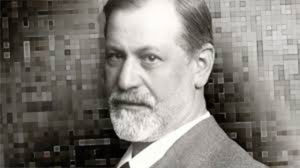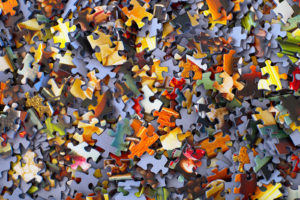Perlaboration du contre-transfert
Résumé
Cet article se veut être un développement de l'article classique de Strachey sur "la nature de l'action thérapeutique de la psychanalyse". Strachey affirme que la pleine et profonde expérience du transfert est perturbante pour l'analyste ; c'est elle que l'analyste craint le plus et souhaite le plus éviter. Il souligne également la nécessité de formuler une interprétation avec calme. Le domaine abordé ici concerne la manière de faire face à ces vécus contre-transférentiels intenses tout en maintenant la technique analytique de l'interprétation. Les illustrations cliniques tentent de mettre en évidence certains aspects du processus de transformation ou d'élaboration chez l'analyste et de montrer que le patient est consciemment ou inconsciemment attentif au fait que l'analyste évite la question ou l'accepte.
Affirmer au contraire que l'analyste n'est pas affecté par ces vécus, d'une part est faux et d'autre part risque de signifier au patient que l'analyste ignore au plan émotionnel ses difficultés, sa douleur et son comportement. Il est suggéré qu'en évitant les émotions, nous risquons d'écarter l'amour qui adoucit la haine, et de permettre ainsi à la prétendue poursuite de la vérité, d'être dirigé par la haine. Ainsi ce qui apparaît comme dépassionné est susceptible de tuer l'amour et la sollicitude. L'objet de cet article est d'étudier comment l'analyste se permet de vivre ces expériences, de les perlaborer et les transformer en interprétation utile.
Samenvatting
Dit artikel wil een vervolg zijn op het klassiek geworden artikel van Strachey over "de aard van de therapeutische werking van de psychoanalyse". Strachey bevestigt dat de volle en diepe ervaring van de overdracht verstorend werkt op de analyticus. Het is die ervaring die de analyticus het meest vreest en wenst te ontwijken. Hij onderlijnt ook de noodzaak de interpretatie in alle kalmte te formuleren.
Het hier aangesneden terrein betreft de manier waarop met deze contratransferentiële belevingen kan afgerekend worden en waarbij toch de analytische techniek van interpreteren aangehouden wordt. De klinische illustraties willen bepaalde aspekten van transformatie en verwerking bij de analyticus in 't licht stellen.
Daarbij willen de auteurs ook aantonen dat de patiënt bewust of onbewust attent is voor het feit dat de analyticus dit vraagpunt vermijdt of het daarentegen niet uit de weg gaat.
Volhouden integendeel dat de analyticus, door deze belevingen, niet beroerd wordt, is langs de ene kant onwaar en houdt langs de andere kant het risico in aan de patient duidelijk te maken dat de analyticus noch zijn moeilijkheden op emotioneel vlak, noch zijn pijn of gedrag wil kennen.
Tevens wordt de vraag opgeroepen of we, door de emoties te verwijden, niet het risico lopen de liefde, waardoor de haat verzacht wordt, op zij te zetten. Zo doende zouden we er ons toe lenen dat de haat het zogenaamde "achterhalen van de waarheid" op sleeptouw gaat nemen. Aldus kan, wat zou kunnen voorkomen als ontdaan van passie, de ware liefde en bezorgdheid kapot maken.
Dit artikel wil er toe komen een studie te maken van de manier waarop de analyticus zich toestaat deze ervaringen te beleven, ze door te werken en ze om te vormen tot nuttige interpretaties.
Summary
This paper is intended as a development of Strachey's classic paper 'The nature of the therapeutic action of psycho-analysis'. Strachey states that the full or deep transference experience is disturbing to the analyst ; that which the analyst most fears and most wishes to avoid. He also stresses that conveying an interpretation in a calm way is necessary. The area addressed is the task of coping with these strong countertransference experiences and maintaining the analytic technique of interpretation. The clinical illustrations attempt to show something of the process of transformation or working through in the analyst, as well as showing that the patient is consciously or unconsciously mindful as to whether the analyst evades or meets the issues.
The contention that the analyst is not affected by these experiences is both false and would convey to the patient that his plight, pain and behaviour are emotionnaly ignored by the analyst. It is suggested that if we keep emotions out, we are in danger of keeping out the love which mitigates the hatred, allowing the so-called pursuit of truth to be governed by hatred. What appears as dispassionate may contain the murder of love and concern. How the analyst allows himself to have the experiences, work through and transform them into a useful interpretation is the issue studied in this paper.





